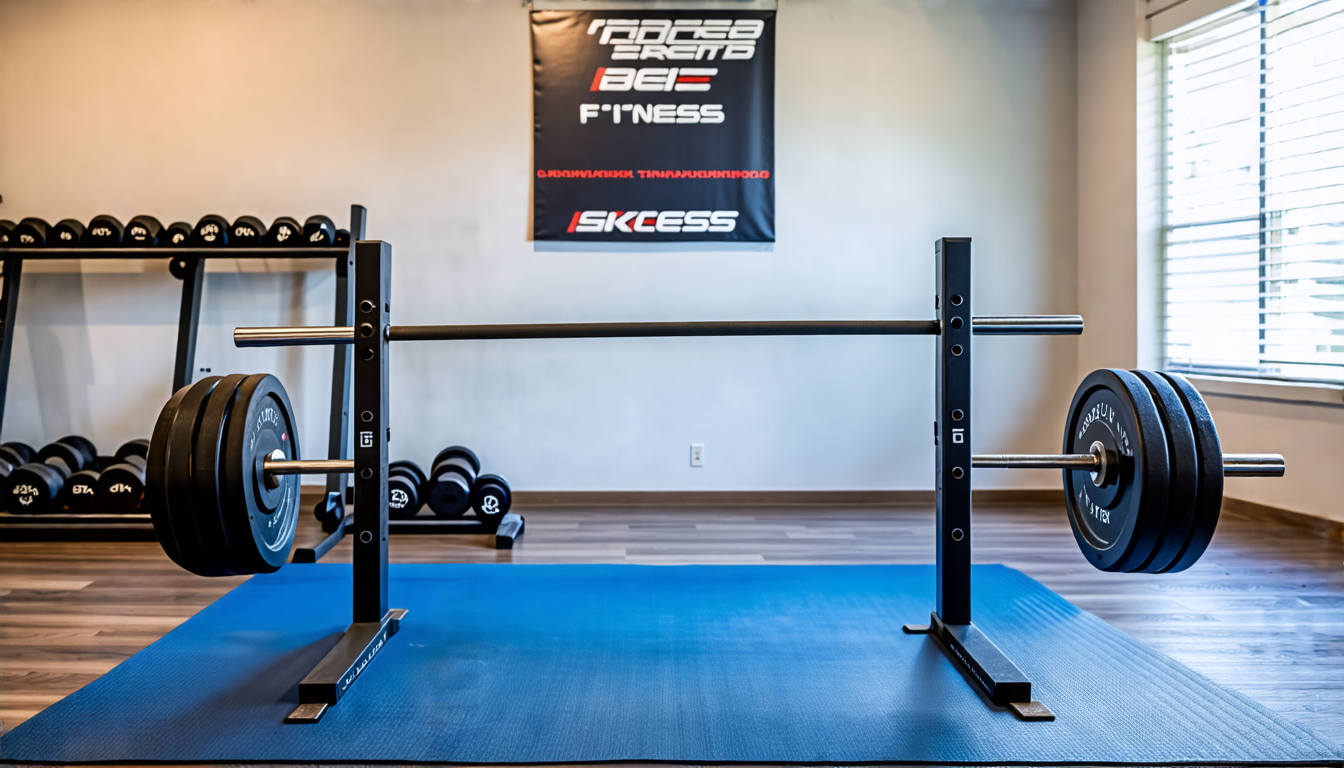When it comes to selecting the right home fitness bar, understanding load and weight capacity is crucial for ensuring safety and achieving your workout goals. The load capacity refers to the maximum weight that the bar can safely support without sustaining damage or compromising its integrity. Several factors can influence this, including the materials used, construction quality, and design specifications. Calculating load capacity accurately requires a basic understanding of physics principles and careful analysis of these variables.
Weight capacity, on the other hand, focuses on the maximum amount of weight you can safely lift using the fitness bar. Recognizing the importance of weight capacity can help you avoid overloading the bar, potentially resulting in serious injury or damage. Different types of weight limits, such as static, dynamic, and maximum capacities, should be considered. Using proper tools and techniques, you can measure weight capacity accurately to ensure your fitness routine is both effective and safe.
By grasping the concepts of load and weight capacity, you can make informed decisions when choosing your home fitness equipment, ensuring both your safety and the durability of your investment. In the upcoming sections, we will delve deeper into each topic, providing you with all the necessary information to enhance your home workout experience.
Understanding Load Capacity
What is Load Capacity?
Load capacity refers to the maximum amount of weight that a structure or device can support without failing. In the context of home fitness bars, load capacity is critical for ensuring safety and optimal performance. Whether you’re doing pull-ups, chin-ups, or other exercises, knowing the load capacity means you can exercise confidently without worrying about the bar succumbing to stress or pressure.
Factors Affecting Load Capacity
Several factors can influence the load capacity of a home fitness bar:
- Material Strength: The type of material from which the bar is made greatly impacts its load capacity. Steel and other high-tensile materials generally offer higher load capacities compared to aluminum or plastic.
- Design and Construction: Bars with reinforced joints, thicker diameters, and structured supports will typically support more weight. The manner in which the bar is mounted (wall-mounted, doorframe-mounted, or ceiling-mounted) also plays a significant role.
- Length of the Bar: A longer bar might distribute weight differently and could potentially have a lower load capacity compared to a shorter bar of the same material and construction.
- Condition and Wear: Over time, wear and tear can affect the load capacity of your fitness bar. Regularly inspecting for rust, cracks, or other signs of degradation is crucial for maintaining safety.
- Installation Quality: Poor installation can significantly reduce the load capacity. Ensuring that the bar is installed correctly according to manufacturer’s guidelines will help maximize its load-bearing capabilities.
Methods to Calculate Load Capacity
Determining the load capacity of a home fitness bar can be approached by several methods:
- Manufacturer Specifications: The easiest way to know a fitness bar’s load capacity is to refer to the manufacturer’s specifications. Most reputable products will have this information readily available either on the packaging or in the user manual.
- Engineering Calculations: For DIY bars or customized installations, you may need to resort to engineering calculations. This involves understanding the stress-strain characteristics of the materials used and calculating the maximum stress the bar can endure before failing. Formulas from structural engineering, such as the axial load formula, can be applied here.
- Empirical Testing: Sometimes, empirical testing is used to determine load capacity. This involves gradually adding weight to the fitness bar until it shows signs of strain or deformation. While this method can offer practical insights, it’s essential to ensure safety measures are in place to prevent injuries or damage during testing.
- Professional Assessment: Engaging a professional engineer or a fitness equipment specialist can provide a thorough assessment of a fitness bar’s load capacity. They can take into account factors like material fatigue, installation quality, and environmental conditions to provide a comprehensive evaluation.

Evaluating Weight Capacity
When it comes to setting up a home fitness bar, understanding weight capacity is crucial. Weight capacity directly affects the safety and effectiveness of your workouts. Misjudging this factor can lead to equipment failure, injury, or suboptimal workout performance.
Definition and Importance of Weight Capacity
Weight capacity refers to the maximum amount of weight that a fitness bar or related equipment can safely support. This includes the user’s body weight and any additional weights, such as plates or dumbbells. Ensuring that your fitness bar can handle the intended load is vital for several reasons:
- Safety: Overloading the fitness bar increases the risk of breakage, which can cause severe injuries.
- Durability: Using the bar within its weight capacity prolongs its lifespan, keeping it in good condition for years to come.
- Performance: A bar suited to your weight capacity requirements will offer better stability and functionality during workouts.
Types of Weight Limits
Knowing the types of weight limits involved will help ensure that you are exercising within safe boundaries. Here are the primary categories:
Static Weight Capacity
Static weight capacity refers to the maximum weight the bar can hold without any motion. This includes the weight distributed evenly and held still. For example, when you hang weights on a bar but do not move them.
Dynamic Weight Capacity
Unlike static weight, dynamic weight capacity involves the forces exerted when the bar is in motion. Movements like pull-ups, kipping, or weightlifting generate momentum and dynamic forces that place additional stress on the bar. Dynamic capacity is usually lower than static capacity due to these extra forces.
Maximum User Weight
This refers to the maximum weight of the person using the equipment. It’s crucial to ensure that the user doesn’t exceed this capacity to avoid undue strain on the fitness bar.
Incremental Weight Limit
Incremental weight limit considers the step-wise addition of weight, like adding plates to a barbell. Ensuring that incremental additions do not exceed the overall weight capacity maintains balanced and safe equipment use.
Tools and Techniques for Measuring Weight Capacity
Now that we’ve identified the types of weight capacities, let’s explore the tools and techniques to measure them effectively:
Load Testing
Load testing involves applying various weights to the fitness bar to test its capacity. Most manufacturers undertake rigorous load testing during product development, but you can also perform your own tests to ensure the bar meets your needs.
- Select weights that are within the anticipated range of use.
- Gradually apply weights to the bar, starting with lighter loads and increasing incrementally.
- Observe for any signs of strain or deformation in the bar structure.
Always adhere to the manufacturer’s guidelines and avoid exceeding suggested weight limits during load testing.
Material Assessment
The material composition of a fitness bar plays a significant role in its weight capacity. Evaluating the material will give you insights into its weight-bearing capabilities:
- Steel: High-quality steel is durable and can support significant weight capacities.
- Aluminum: Light yet strong, aluminum bars may support moderate weights suitable for general fitness.
- Composite Materials: Modern composite materials offer a balance between strength and weight but vary widely in capacity.
Consult the manufacturer’s specifications for detailed material information and related weight capacity.
Manufacturer’s Specifications
The simplest and most reliable method to determine weight capacity is to refer to the manufacturer’s specifications. These specifications, often found in product manuals or listed on the bar itself, provide maximum safe weight limits.
- Static Weight Capacity: Clearly stated maximum static load.
- Dynamic Weight Capacity: Safe limit for movements and exercises involving momentum.
- Maximum User Weight: Limit for user body weight alone.
Professional Assessment
In complex or uncertain scenarios, consulting a fitness equipment expert or engineer can offer additional peace of mind. Professionals can apply specialized tools and methodologies to precisely assess the weight capacity of your fitness bar.
Safety Margins
Incorporating safety margins is a prudent approach. This involves subtracting a percentage of the stated weight capacity (e.g., 10-20%) to ensure added safety. For instance, if a bar has a weight capacity of 300 lbs, a 15% safety margin would bring the effective capacity to 255 lbs.
Regular Inspection
Periodic inspections help maintain the integrity of your fitness bar. Check for:
- Wear and tear, especially in load-bearing sections.
- Any signs of rust or corrosion, especially for steel bars.
- Bending or deformation, which may indicate compromised strength.
Regular maintenance can catch potential issues before they become major problems, ensuring ongoing safe use.
In summary, understanding and evaluating weight capacity involves taking into account static and dynamic loads, maximum user weight, and incremental weight limits. Employing tools like load testing, material assessment, and consulting manufacturer’s specifications or professionals are effective in measuring weight capacity. Remember, consistent inspection and applying safety margins further enhance the overall safety and longevity of your home fitness bar.
In conclusion, understanding the load and weight capacity of your home fitness bar is crucial for both safety and performance. By comprehending what load capacity entails, recognizing the factors that impact it, and learning the various methods to calculate it, you can ensure that your equipment supports your workout needs without risk of failure. Similarly, evaluating the weight capacity, including knowing its definition, importance, and the different types of weight limits, allows you to utilize your fitness bar to its full potential. Employing the right tools and techniques to measure weight capacity can further enhance your experience, providing a secure and effective environment for your fitness journey. Keeping these insights in mind, you can make informed decisions that promote safety and longevity for both you and your home fitness equipment.

